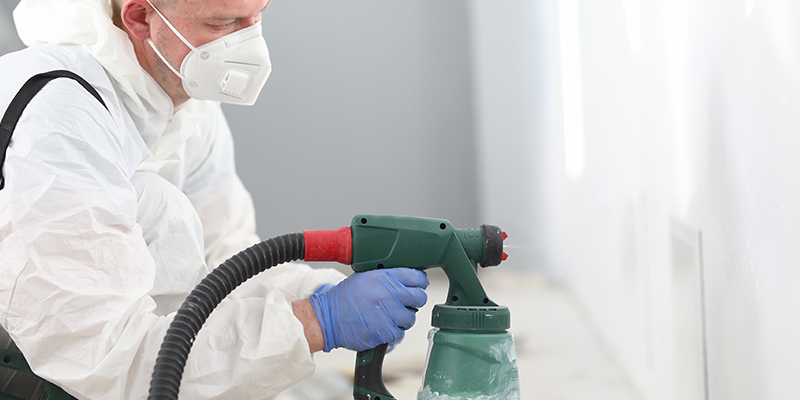
Can you Paint over Spray Foam Insulation? - 5 Steps
Although spray foam is one of the best, if not the best, form of insulation for your home, it does not always have the most aesthetically pleasing appeal that you wanted. When considering home insulation, of course the main factors are thermal insulation, soundproofing, moisture resistance and more. However, it would be ideal to also have a home insulation that does not stand out too much. Luckily, there are ways and methods around this, you can paint over spray foam insulation in your home.
If you have foam insulation that is visible, typically the Icynene spray foam solution is shown in a distinct light beige colour, then you are able to paint over it, but we highly recommend you take the right approach and adhere to these following steps and protocols.
How to Paint Over Spray Foam Insulation?
1. Choose the Right Paint
Before you begin your painting process, it is important to take the right approach, this means by using the right paint. Some paints, for example, oil-based or solvent-based paints can actually damage the insulation, of course something you wish to avoid, along with any other unknown chemical reactions. We recommend purchasing and using paints recommended by insulation professionals and to look for paints specific for coating spray foam insulation.
2. Drying
If you wish to paint over your newly installed residential spray foam insulation, then it is important that the insulant is completely dry before you begin. In order to not damage the foam and its effectiveness, make sure that it is completely dry before attempting to paint it. Typically, Icynene spray foam insulation will dry by waiting at least 24 hours.
Sanding
When Icynene foam insulation is installed, the texture is typically a bit rough and bumpy, this can make it difficult to paint over and leave inconclusive results. As spray foam insulation is installed it can easily expand in an uneven nature, due to its installation process the insulation is set to expand to cover a surface area. Therefore, we recommend sanding down the texture slightly until you get a smoother, easily paintable surface. Remember to always wear protective eyewear when sanding. When you do begin to sand your foam insulation, we recommend you use sandpaper of 80-120 grit, this will provide a smooth area without removing foam below the surface level.
Clean-Up
After you finish sanding down the spray foam insulation, you work area will likely be left with dust and debris from the expanding foam. In order to best paint your spray foam, we recommend wiping down the area to clear all dust. There are a variety of ways to do this, if you installed your home with expanding spray foam which is waterproof, then a damp cloth will be good to use and wipe down the area, removing dust and extra debris. Remember to wait for it to dry once wiped down if you use a damp cloth.
If you opt for a dryer approach and you do not want your spray foam to get wet, you can simply use a dry cloth or air to clear the area of debris and dust particles. Using anything that can blow pressurised air can assist in removing the particles from your foam area, which will benefit the painting of your foam. It is important to remember that when you are dealing with insulation particles, dust and debris, to always wear protective gear.
Application
When it comes to applying the paint on your spray foam insulation, there are various ways to do so. You can use spray paint, paint rollers or a simple hand brush. Using a hand brush can be good to paint over small and precise areas, however, will not provide an overall smooth and even finish. Paint rollers is a good method for larger areas, but if the foam insulation is not completely smooth then you will see variations. Spray paint is the most optimal way to paint large spray foam insulated areas, it will be easy to do and provides an even finish. Spray paint can easily coat bumps and ridges without clumping.
Depending on your type of foam insulation, whether it is open-cell or closed-cell foam, the difference in density can make it easier or harder to paint. For example, closed-cell foam insulation is denser than its counterpart, open cell, therefore can be easier to paint with a bristle brush or a paint roller.
Professional Work
The most appropriate approach and to get the best results would be to hire a professional. If you wish to limit the damage to your spray foam insulation and receive the best possible results for its new paint coat, then using a professional painter or insulation painter may be the best method for you. If you wish to discuss more about painting your spray foam insulation or if you have any questions regarding your new foam insulation, you can call us directly on 0203 411 5188.


